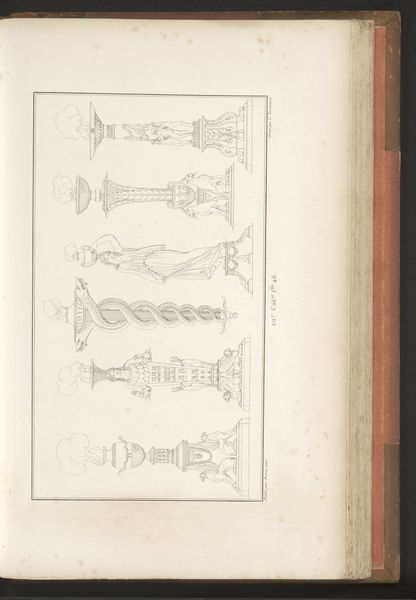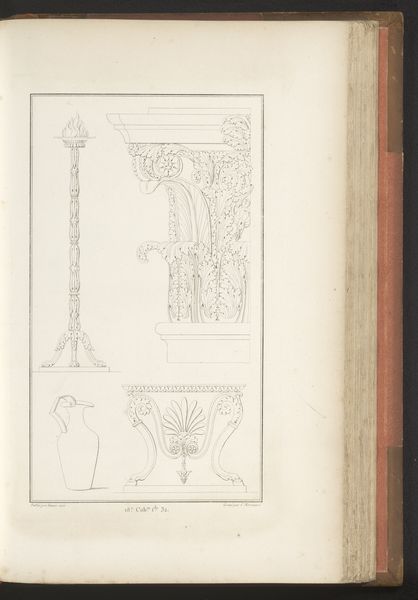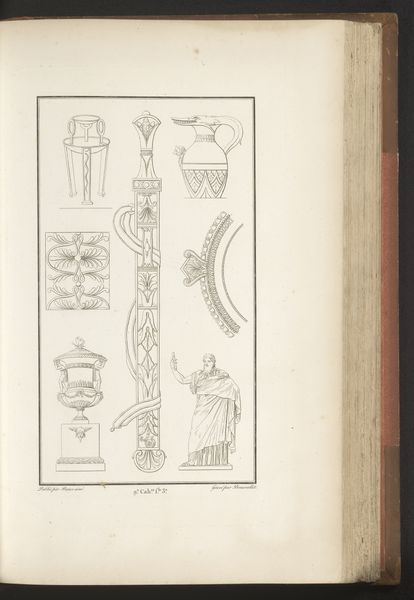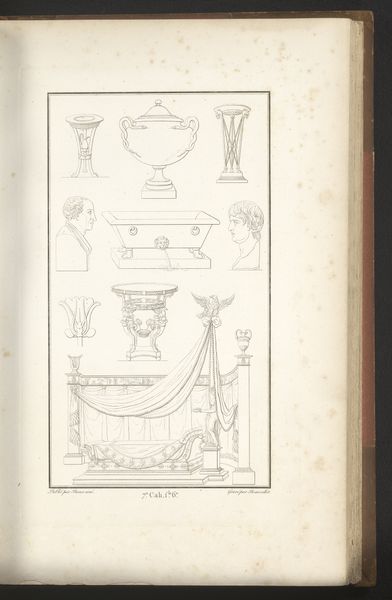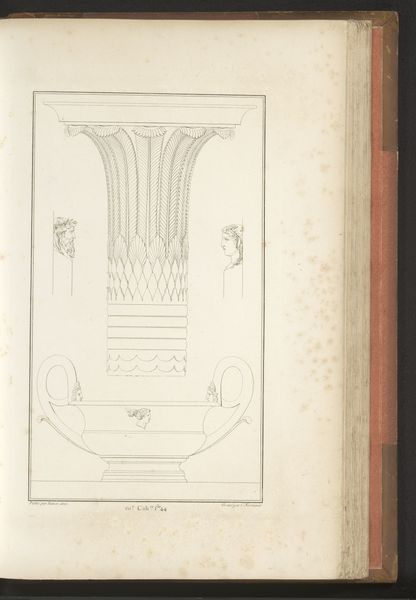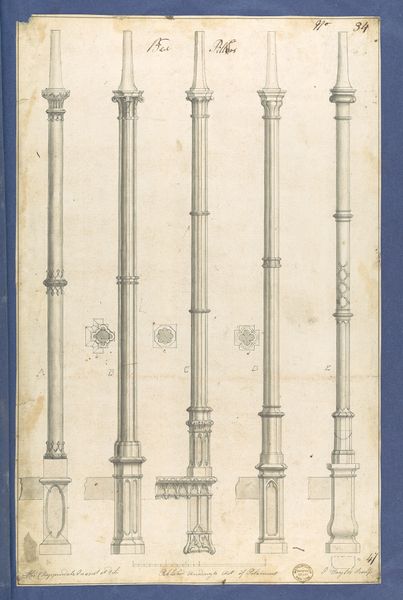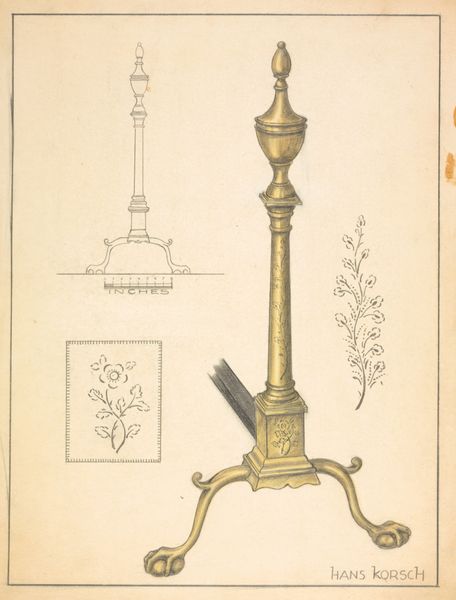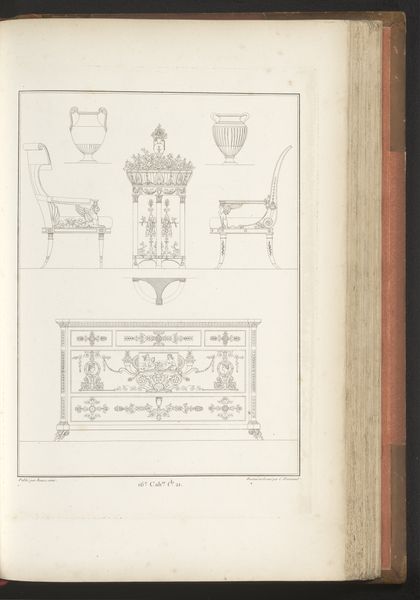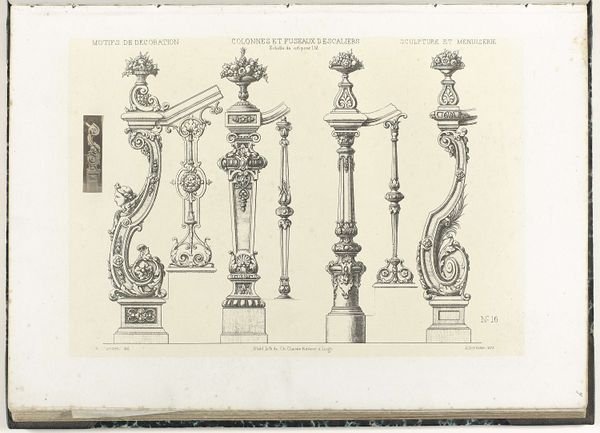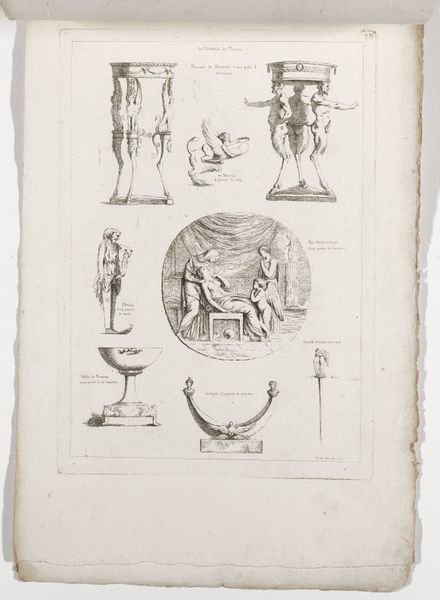
drawing, paper, pencil
#
drawing
#
neoclacissism
#
paper
#
geometric
#
pencil
Dimensions: height mm, width mm
Copyright: Rijks Museum: Open Domain
Curator: Let's consider this page of drawings titled "Drie gueridons en een tobbe," created around 1820 by Charles Pierre Joseph Normand. It shows us studies of neoclassical furniture. Editor: At first glance, it's strikingly formal and precise. Almost feels more like an architect's blueprint than a drawing intended to evoke emotion, although the symmetry does please the eye. Curator: Indeed, Normand worked as a draughtsman, producing detailed engravings for architectural publications. This work reflects the prevailing Neoclassical style, which placed importance on geometric forms and classical motifs. The precision isn't just aesthetic; it served the practical function of disseminating designs for manufacture. Editor: It is interesting how cold the whole drawing feels despite that someone has clearly laboured over the work and intricate little details. I do enjoy how he contrasts textures within such a rigid framework, especially in the details on the legs of the tables and the curves on that intriguing tub. It hints at a warmth trapped within this icy style. Curator: Notice how each design incorporates historical references? The lion masks on the tub, for instance, are lifted straight from antiquity. We're seeing here not just furniture, but statements about taste, knowledge, and connection to a glorious past. Each design represents an attempt to bring historical authority into the present. Editor: I suppose the past has always furnished our present. This almost archaeological style appeals to me, it makes me wonder what we would learn, a few centuries from now, if someone where to find sketches of contemporary furniture? Do you think these would be found equally fascinating or entirely disposable, divorced from cultural value? Curator: That's a compelling point! Future excavations of IKEA designs, perhaps? Anyway, for me, studying a drawing like this isn't only about identifying sources; it's also about tracing the movements of ideas, labour and materials in early 19th-century Europe, and perhaps it can make us reflect on our current society. Editor: Exactly, there’s definitely an underlying narrative, despite the surface austerity! Thank you, I really feel that I understand this a lot better now, the picture, its origins and potential legacy.
Comments
No comments
Be the first to comment and join the conversation on the ultimate creative platform.

